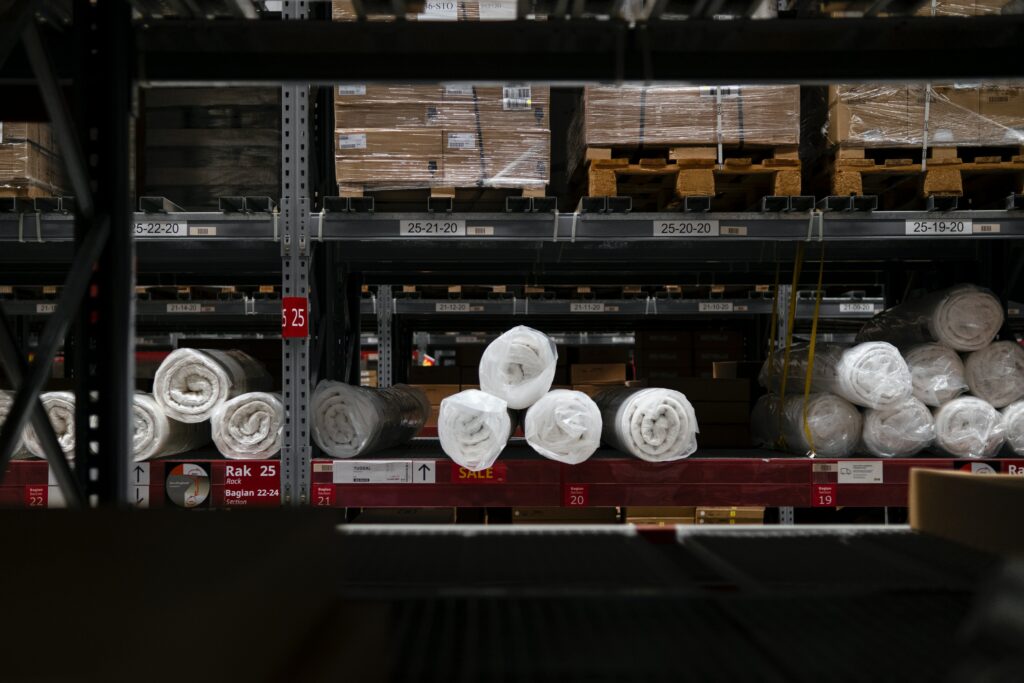Completing A Risk Assessment For Manual Handling

A manual handling risk assessment is an important document for those involved in manual handling in the workplace. Having a risk assessment for manual handling is essential because manual handling involves lifting, carrying, pushing, or pulling objects, which could potentially lead to injury. A risk assessment for manual handling mitigates these risks by introducing control measures and providing workers with guidance on the safest way to complete specific tasks. This guide will explain more about completing a risk assessment for manual handling and what should be included.
Who Needs A Risk Assessment For Manual Handling?

Anyone who performs activities that involve lifting, carrying, pushing, or pulling heavy objects as part of their job will need a risk assessment for manual handling. These actions may be done by hand or using bodily force. Manual handling is part and parcel of many roles across several industries including, construction, healthcare, manufacturing, and warehouse operations. The load that is being carried, pushed or pulled can refer to objects, people or animals. Warehouse operatives, nurses and delivery drivers are just some examples of people who will undertake manual handling as part of their job role, and who will therefore require a risk assessment for manual handling.
What Are The Risks Of Manual Handling?
When manual handling tasks are not performed efficiently it can lead to musculoskeletal injuries. These injuries can occur immediately or present themselves further down the line after repeated strain. Musculoskeletal injuries are things like strains, sprains, and back injuries and can be mild to moderate or severe. These injuries can result in aches and pains or more debilitating injuries that require physiotherapy and time off work. This is why the Health And Safety Executive (HSE) states that a risk assessment for manual handling is a legal requirement that must be completed by employers to protect their employees.
Other risks of manual handling include:
- Slips, trips and falls – any risk assessment will cover slips, trips and falls as they are common hazards in many workplaces. With a risk assessment for manual handling, slips or falls can be a greater risk as carrying heavy loads makes falling more likely, and the resulting injury more damaging
- Repetitive Strain Injuries – the repetitive nature of manual handling tasks, for example, assembly line work, can lead to conditions like carpal tunnel syndrome and tendonitis
- Overexertion – loads should be of a safe weight to avoid overexertion, and awkward loads should also be accounted for in a risk assessment for manual handling. Overexertion can cause fatigue, muscle fatigue, and overheating
- Falling Objects – environments where workers are involved in manual handling usually have the added risk of heavy objects falling from heights. As part of a risk assessment for manual handling, provisions should be made to keep such objects secure
Completing A Risk Assessment For Manual Handling

Each industry will have its own nuances when it comes to completing a risk assessment for manual handling. Employees working in the healthcare sector will have risks specific to their job function and role, which will differ to those of a warehouse manager for example. Nevertheless, a risk assessment for manual handling will have a similar structure or template to start out with. A simple guide to follow would look like:
Identify Hazards
As with all risk assessments, you will need to begin by identifying the types of hazards that can potentially cause harm. Identifying hazards will include specifying the type of task, such as lifting, carrying, pushing, or pulling, and specifying the objects or loads involved. The weight, size, shape, and stability of these objects will need to be assessed too. For example, scaffolding on a construction site will have different safety considerations than a pallet truck in a warehouse. Environmental factors should be identified and noted as well, and might include things like space constraints, uneven floors, or slippery surfaces.
Who Is At Risk
With multiple people working in manual handling environments, you will need to establish who is at the most risk from each type of activity and task. Factors like age, level of fitness, and any training or previous experience could be relevant here. This is also important so that you know who needs to see the risk assessment for manual handling and any relevant method statements contained within.
Assess The Risk
Once the risks and the workers have been identified, each risk should be evaluated in more detail. A full assessment will cover things such as the weight and dimensions of the objects or load, and how often and how long the task is done for. With a risk assessment for manual handling, the posture and technique used by operatives can be a risk factor, as can industry specific environmental factors like machinery or vehicles in a manufacturing plant.
Implement Measures
Once the initial stages have been completed and all the information is present and correct, the final stage is to look at the risks that have been identified and how each task can be controlled to eliminate or reduce manual handling risks. These control measures may include:
- Reducing heavy loads, either by separating into smaller amounts or assigning more people to the task who can share the load
- Providing aids or adaptations that will make the job easier, such as trolleys or fork lift trucks. PPE might also be introduced for certain tasks. Adequate training would need to be put in place for operatives using this kind of equipment
- Reorganising the work space to make it more ergonomic by making more space, removing sharp edges or placing work stations closer together so there is less distance to travel. Signage could also be put in place as a regular reminder to workers of what they should or should not do
- Reassessing the best way of completing a task and implementing safe systems of work that operatives can refer to for every task
- Initial and ongoing training for staff to educate them on the safest manual handling techniques. Health and safety training also ensures those in charge are up to speed on current health and safety regulations, and can therefore keep employees safe
Who Is Responsible For Conducting A Manual Handling Risk Assessment?
A manual handling risk assessment is the responsibility of the employer. The employer has a duty of care to all staff and must protect their health and safety. Complying with health and safety legislation is essential for all businesses so that potential risks can be identified and addressed to prevent injuries and promote a safe working environment.
Employers will usually have a designated person who is responsible for workplace health and safety. This person will have undertaken health and safety training and will therefore have the knowledge and experience to identify hazards and put control measures in place.
Risk Assessments From Rhino Safety
Manual handling has several risks associated with it, and workers will need to be trained in best practice, and be protected by a thorough health and safety risk assessment. Rhino Safety manages all aspects of health and safety, from audits and COSHH assessments to DSE regulations and fire safety.
Our team of experts take the hassle out of health and safety so that your employees, and your business, are protected. Contact us for a quote.
